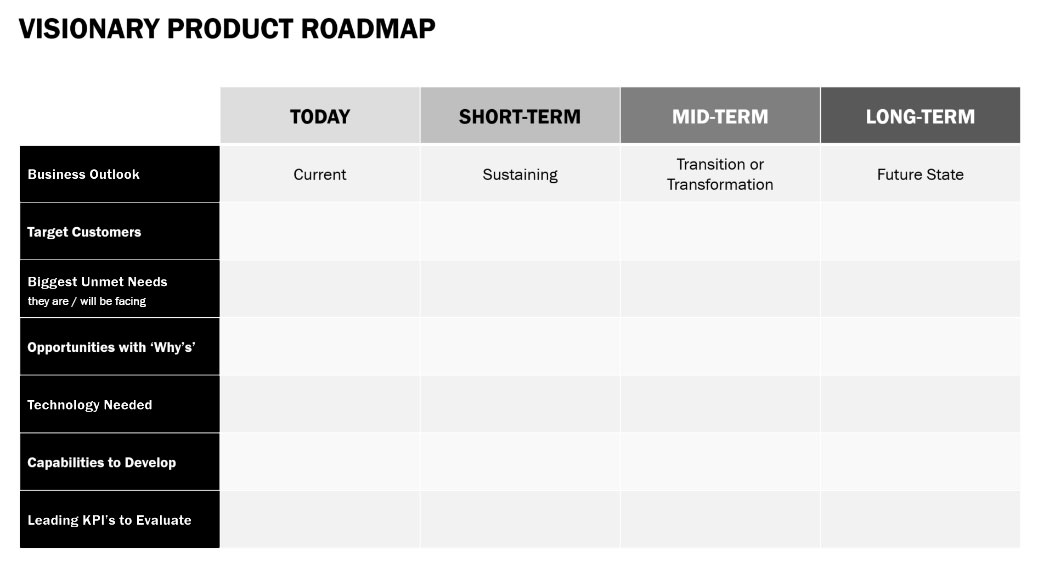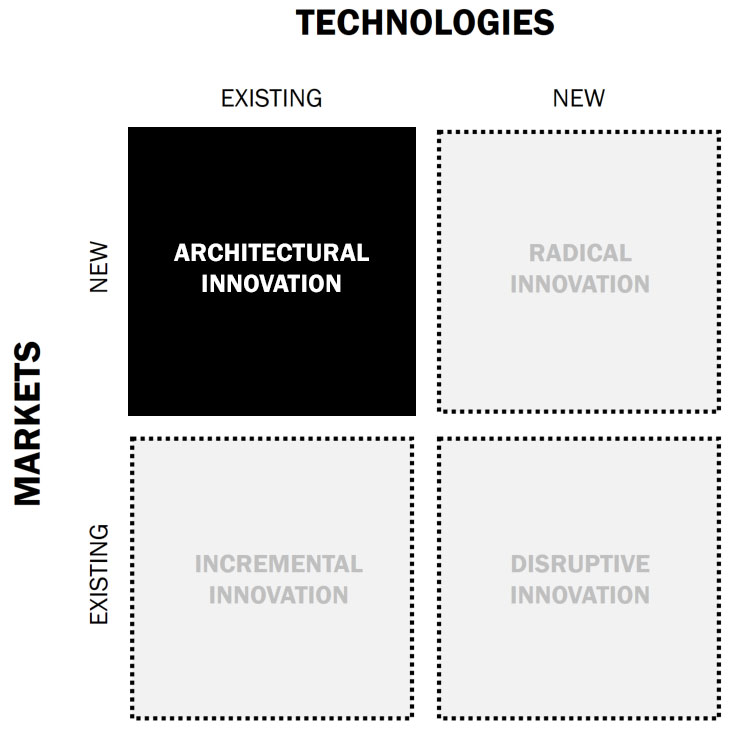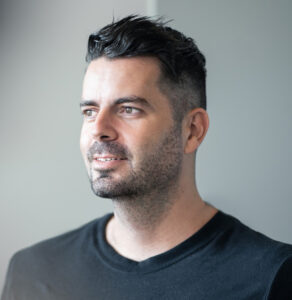
Article
Innovate or Die: 3 Business Reasons to Invest in New Product Development
Innovate or die. It’s that simple. To gain stakeholder support and excite consumers, learn how to develop long-term roadmaps for new product development.
We’re all familiar with the old adages of “if you’re not moving forwards, you’re going backwards” or “the only constant in life is change”. These statements are even more relevant today than ever before, and there are copious amounts of business examples out there to support them.
It’s safe to say, this lesson applies to your organization, too. No matter how successful your past products have been, it’s essential to continue discussing “what’s next?” and to never get comfortable with the status quo. Keeping your finger on the pulse of your audience’s wants and needs — and proactively developing new solutions to meet those needs — is a critical component in driving your business forward. I could chat for days about how new products can help your business connect to your target audience and reinforce your brand. But there are less discussed benefits of new product development that are just as important when avoiding market stagnancy.
Understanding and addressing the three following overlooked benefits of new product development will go a long way in ensuring you have a sustainable business. Don’t become yet another business that rests on its laurels, walking backwards to an imminent fate. Evolve, don’t DIE!
1. Top Talent & Visionary Product Roadmaps Go Hand-in-Hand
Your number one asset is your people. Without them, you don’t have a business — plain and simple. And in today’s competitive hiring landscape, it’s more challenging than ever to attract and retain talented and dedicated employees who will consistently deliver your brand promise to your customers.
The best and brightest prospective employees want to grow, develop, and achieve. They want to influence their company and be proud of the work they do. This is why promoting and investing in continuous new product development is so critical.
Liberating your employees to voice, research, and develop new ideas creates a culture of innovation that both your individual employees and your organization as a whole will benefit from. The beauty of this approach is that it also leads to significant improvements in your product offerings, which are paramount when ensuring business sustainability and constant forward momentum.
The last thing you want to do is sit idle as your competition erodes your market share, or fall victim to the commoditization trap by wasting valuable resources on designing another ‘me too’ product. Leveraging and motivating the full power of your team will help ensure you’re constantly evolving.
How can I start this?
To do this effectively, you’ve got to afford your internal team both structured direction and breathing room to unearth the most impactful opportunities that will best serve your business moving forwards. Aligning on a visionary product roadmap that outlines strategic goals, opportunities, and activities (*not solutions!) is a great starting point in helping unleash your team’s full potential. The beauty of a good visionary product roadmap is its flexibility and its organic ability to evolve as you and your team learn more. There are many simple templates you can use to get you started.

This brings focus to short-term goals that help sustain your immediate revenue needs and long-term objectives that help to futureproof your organization. Strategic parameters such as these will provide your internal talent with the stimuli they crave and build strong emotional connections into the bigger picture of your company.
In basic terms, designing, engineering, and marketing new products allow your people to apply their expertise in new, exciting ways. When you’re committed to constant innovation, there’s no need for these talented employees to look for new challenges elsewhere. They can find opportunities to grow right where they are while supporting exponential organizational gains at the same time.
2. Use Architectural Innovation To Decrease Risk and Increase Opportunities
Smart investment portfolio managers know not to put all their eggs in one basket. Diversification mitigates the risk of losing everything if a particular stock’s value plunges. In the same way, your company shouldn’t depend too much on the sole success of one product — or even one product line.
Pursuing an architectural innovation path can often inspire new diverse product categories and revenue streams, which means your company won’t come crashing down if you experience disruptions or shake-ups in a particular area.
What is “Architectural Innovation”?

Architectural innovation occurs when organizations create new product offerings for new markets based on an existing technology or competency that they currently have. There are ways to diversify your offerings and enter these new markets without completely reinventing the proverbial wheel.
For instance, Black & Decker borrowed from their high-performing hand drill line to create a series of blenders. Translating the technology and design they used in an industrial setting into a similar consumer-based product enabled them to create a whole new revenue stream and broaden their audience. Even better, they did it without needing to make a risky or even particularly large development investment. That being said, as with any new product offering, validating consumer demand and brand acceptance in a new market is imperative for this to be successful.
It goes without saying that this level of diversity also enables faster growth. Increasing your market share by 30% is a lot easier to accomplish when you spread the growth target across multiple products and markets.
To identify diversification opportunities at your company, explore questions like:
- What value do we provide in our current market?
- Why do people buy our products?
- How can we expand what we do well into additional markets?
- Are there components we’ve mastered (e.g. motors, optics, navigation) that could work well in other product types?
- Are there natural ways to build out an ecosystem of related products that build on each other’s strengths?
Of course, you shouldn’t just keep throwing product ideas at the wall to see what sticks. Rather, carefully evaluate your product success stories to identify additional opportunities for market impact.
3. Ongoing Product Development Sharpens Your Business Practices
New product development (like any skill) is a muscle and the more you work at it, the stronger it becomes. Every time you develop a new product, you have an opportunity to optimize your processes and streamline your operations based on past experiences. The lessons learned during any product development cycle are invaluable and I guarantee that if you were to do things over there would always be room for improvement.
The most successful companies have a habit of discussing “what’s next?” and “what could we have done differently?” long before their current project is complete. This definitely shows in the quality of offerings they bring to market and their consistent ability to increase market penetration.
The beauty of this mindset is that its benefits aren’t just limited to improving your product offerings for your customers. There’s a huge opportunity to accelerate your operations efficiency through NPD. Reducing manufacturing costs and speeding up time-to-market are common wins of a well followed new product development regime. A good example of this is establishing more of a platform approach to product design.
While focusing on your immediate short-term product needs, see this as an opportunity to build in design flexibility that can allow you to iterate on your product offerings even after market launch. It could be as simple as having the ability to decrease or increase features on an existing product such as a screen size or physical user interface, or consolidate componentry and hardware elements based on product and user learnings. Even factoring in the ability to leverage a different material for manufacturing to help reduce cost or increase perception further down the line is a tried and tested method of optimizing efficiency through NPD design flexibility.
Take this one step further!
You can and probably should take this strategy further. The more you can better understand and inform your visionary product roadmap, the greater opportunity you have of using a product platform framework to not only enable SKU improvements on your short term solutions, but also act as a development bridge to some of your longer-term, future state product offerings.
Let’s use the fairly recent automotive industry transformation as an example. You’re focusing on your next lineup of combustion engine vehicles to meet immediate needs, but you also know you need to make the transition to electric. That combined with the anticipated future state of delivering fully autonomous solutions to your customers can be (with good reason) overwhelming. But understanding the key commonalities between the solution spaces and gaining a clearer view of what can be shared across platforms will enable you to design more smartly with a better eye on the future. These don’t all have to be, and shouldn’t be developed in isolation.
These operational efficiencies ultimately enable your company to produce new products more quickly, keep pace with the ever changing needs of your consumers, maximize the return on your investment, and outpace the competition when it comes to innovation.
Champion a Healthy Product Development Roadmap to Keep Your Business Viable
There’s no time to rest on your laurels. Achieving your company’s market potential is simply not possible without strategic and consistent product development. Continuous forward motion is the name of the game.
Of course, as one of your organization’s visionary leaders, you already know that. And by presenting a strong business case that spells out every benefit your company stands to gain, you can win the support and buy-in you need to bring your long-term product development roadmap to fruition.





